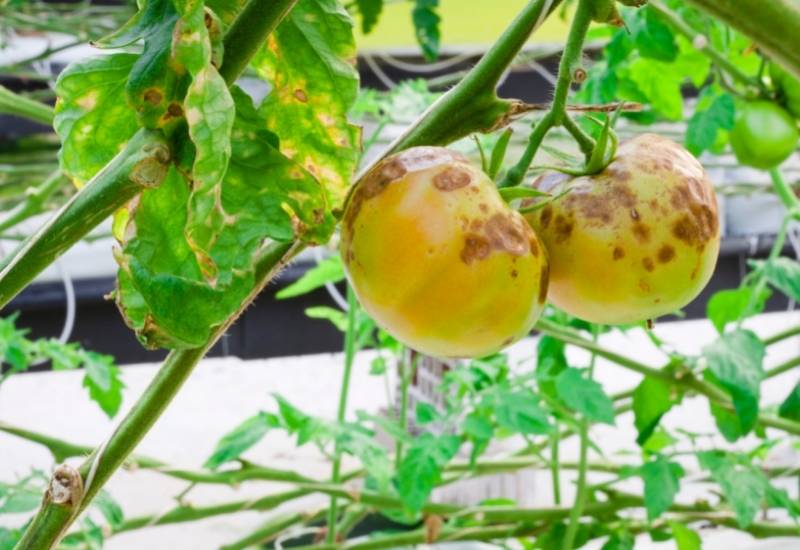
Early blight is a common fungal disease that can attack your tomatoes and spread throughout your garden to other plants in the tomato family.
The disease is more likely to infect already weakened or sickly plants, so a key part in its prevention is to provide excellent care for your tomatoes from day one.
Read on to learn how to identify and prevent this common tomato disease, so that you can avoid the headache it causes.
Early Blight in a Nutshell
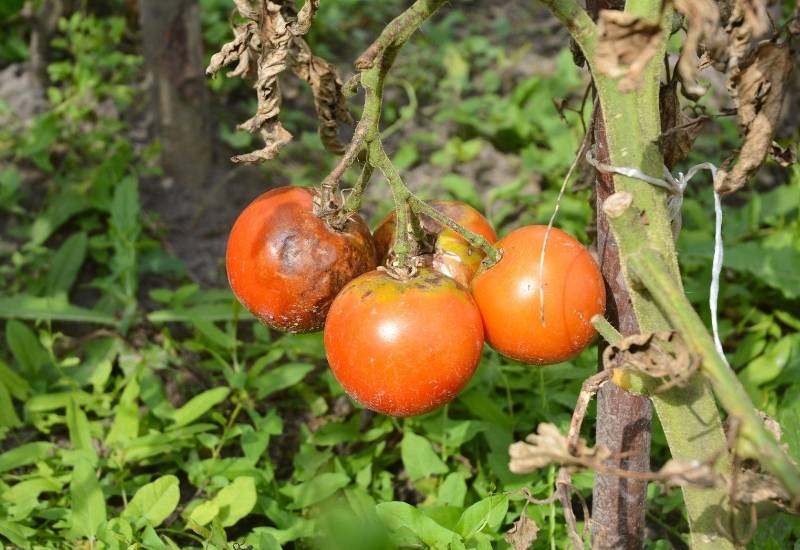
Early Blight is a fungal disease most known for infecting plants in the Solanaceae family, like tomatoes and potatoes, although it can infect other plant families as well.
It often results in the defoliation (loss of leaves) of tomato plants, and is more likely to infect already weakened or vulnerable tomato plants.
This disease pathogen is unfortunately quite common throughout North America, and like most fungal infections spreads through spore production.
It is sometimes confused with the much more aggressive disease late blight, so make sure to carefully assess the symptoms your tomato plant is displaying to ensure a correct diagnosis.
What Causes Early Blight?
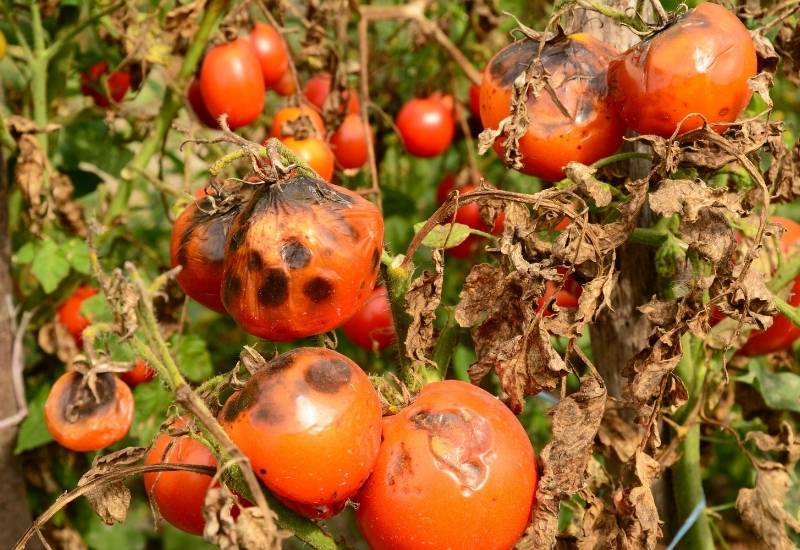
Early blight is caused by two fungi, Alternaria tomatophila and Alternaria solani. A. tomatophila is more likely to infect tomato plants and A. solani is more likely to infect potatoes, however, both can infect tomatoes in ideal conditions.
Early blight can be introduced to your garden by purchasing or saving infected seeds or seedlings, or by spores being blown by the wind or rain and landing on your plants.
Lower leaves are often affected first from rain splashing spores up from the soil surface. The pathogen enters your plants through small wounds and cuts, and is more likely to infect already vulnerable or sickly plants. There is also some evidence that the flea beetle can transmit early blight to tomatoes.
Early blight can theoretically occur in any type of weather, but is more likely to spread in damp, wet conditions when temperatures are from 59-80℉.
It can also live in the soil for around a year, and may overwinter on infected plant debris left in the field before spreading to new plants the following season.
Identifying Early Blight Symptoms on Tomatoes
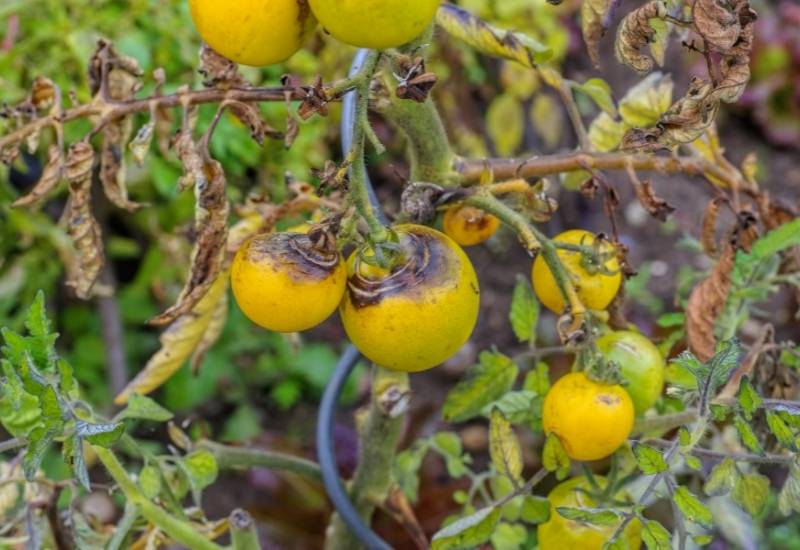
Early blight affects the leaves, stems, and fruits of tomato plants. Lower, older growth is most likely to become infected first, until the disease has slowly worked its way up the plant and infected all the foliage.
The most common symptom of early blight in both seedlings and mature tomato plants is small-ish brown spots developing on the lower leaves. The spots typically have concentric rings inside them that give a target or bullseye appearance, and are often surrounded with a light green or yellow halo.
On average, the spots and blotches that develop from early blight are a quarter to half an inch in diameter. As it advances, infected parts of the leaves will die, dry, and fall away leaving bare, brown stems or raggedy foliage in its wake.
Infected stems develop something called collar rot, where the stem a few inches above the soil line becomes soft, brown, and rotten. Dark brown rings might form around the stem, and the infected parts may become dry and powdery.
The fruits of tomato plants infected with early blight will develop large black spots that are usually located close to the stem. Like the leaf spots, the fruits may develop raised concentric ridges in the sunken area. Both unripe and ripe fruits can be affected, and may eventually drop from the plant.
Although early blight is usually associated with older plants, seedlings can also be infected and will show smaller brown spots and lesions on the main stem and leaves.
How to Tell Early Blight Apart From Other Diseases
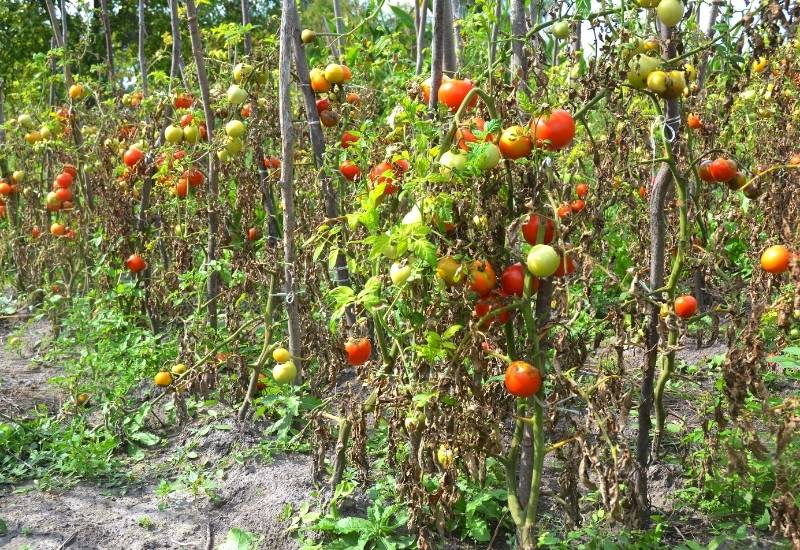
Early blight is often confused with several other diseases that show shared symptoms of spotting on the leaves and lesions on the stems of tomato plants.
It’s important to distinguish the below diseases from early blight, so that you can take the appropriate treatment and preventative measures.
1: Bacterial Spot
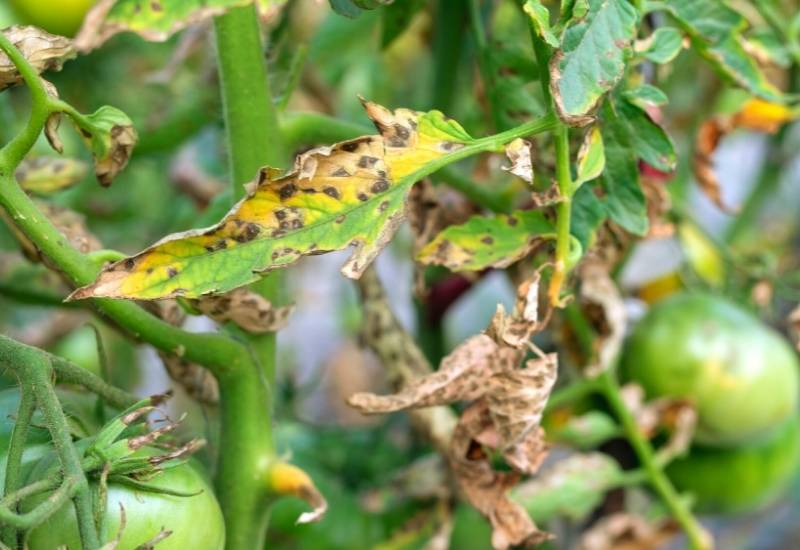
Bacterial spot is often confused with the beginning stages of early blight, as their spots can look similar upon initial infection.
Keep in mind that early blight has larger spots that bacterial spot, which usually produces blotches that are only 1/16th of an inch in diamter.
In addition, the centre of the spots from bacterial spot may blacken and fall out, leaving a bullet hole appearance, and the underside of the spots may also be wet or water-soaked.
2: Gray Leaf Spot
The main way to distinguish gray leaf spot from early blight is by looking at the centre of the spots. Gray leaf spots won’t typically display any concentric rings but will crack in the centre instead.
3: Septoria Leaf Spot
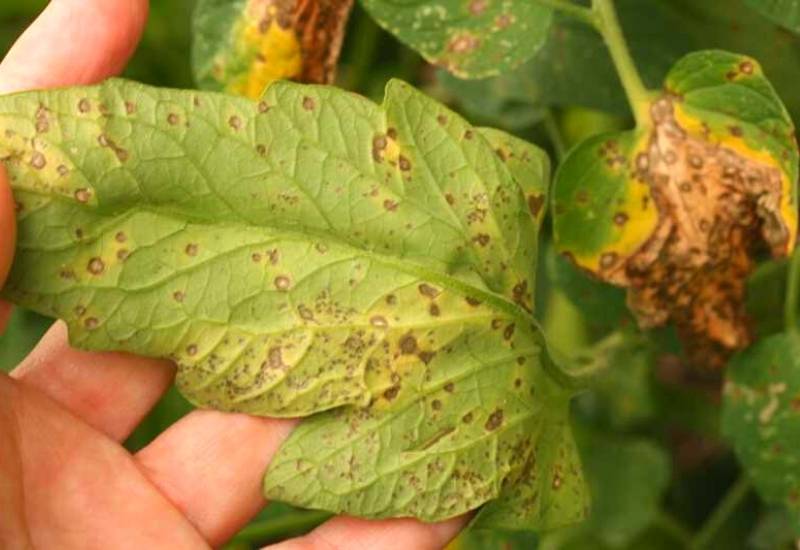
Septoria leaf spot blotches will typically have a light brown or grey centre, without concentric rings like early blight. The spots are also, on average, smaller than those of early blight.
4: Late Blight
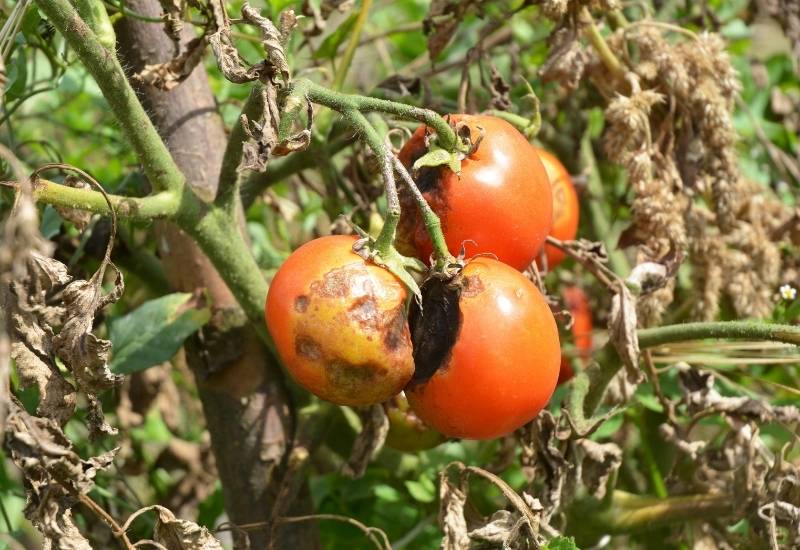
Although often confused with early blight, late blight is a completely different and much more serious disease.
Late blight is a more vigorous spreader than early blight, with lesions and spots that engulf all parts of the plant including young, fresh growth.
Early blight symptoms will begin on lower, older leaves and eventually work its way up, but at a much slower rate that late blight, which can infect an entire, mature plant in a just a few days.
What to do with Tomato Plants Infected with Early Blight
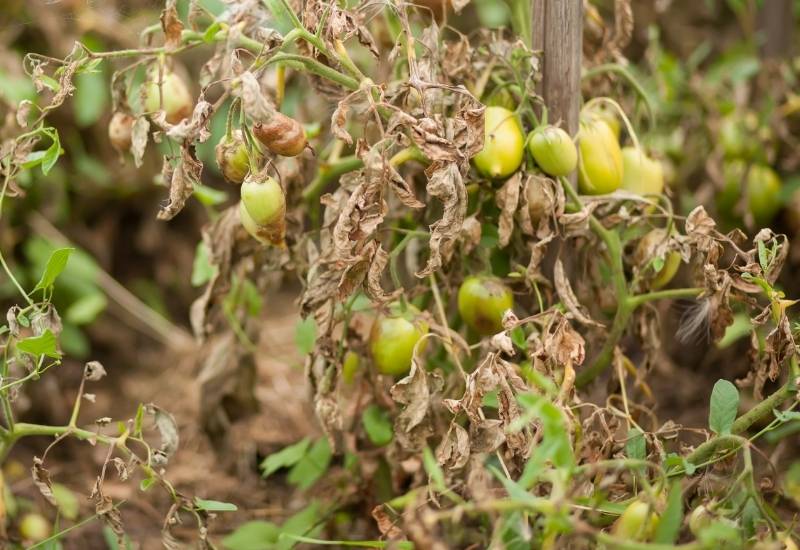
Early blight, unlike several of the other diseases it might be confused with, can be treated, if it caught early enough, with organic fungicides.
Even organic fungicides can have adverse effects on your garden ecosystem if used constantly, so preventing the disease in the first place with cultural controls is the most sustainable way to keep early blight out of your tomato crop.
For plants that are already infected, immediately begin treatment with organic copper-based fungicides. Prune away and burn as many of the spotted leaves as possible, and then apply the fungicide to all remaining healthy foliage. Repeat every week until symptoms are no longer present.
For advanced infections of early blight, in which the majority of the plant has lesions, spots, or blotches, you should remove any infected tomato plants and destroy them to prevent the fungus from spreading any further.
Tips to Treat And Prevent Early Blight Infections of Tomatoes
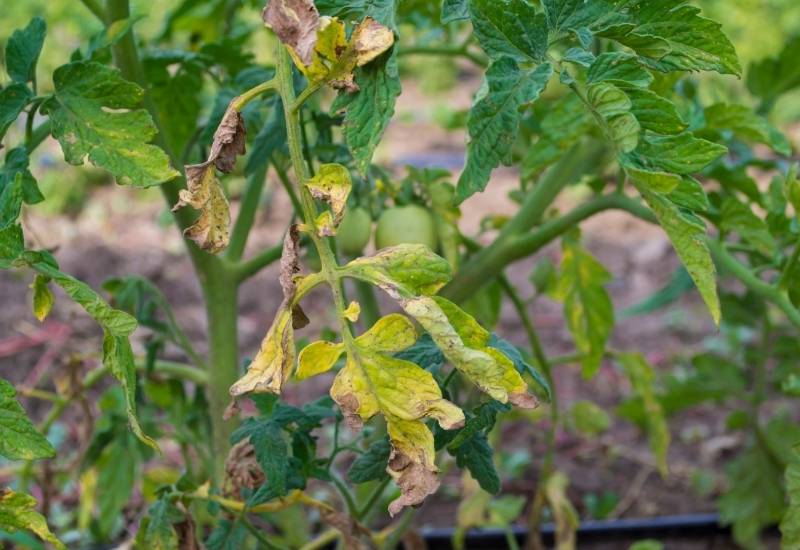
As there is no cure for tomatoes that have early blight, prevention is essential when it comes to early blight, as it is a common disease that many tomato growers have to think about throughout the growing season.
Chances are, without proper preventative measures, early blight will infect your tomatoes too. Here is what you need to do to make sure that doesnt happen:
1: Create good air flow between plants by trellising
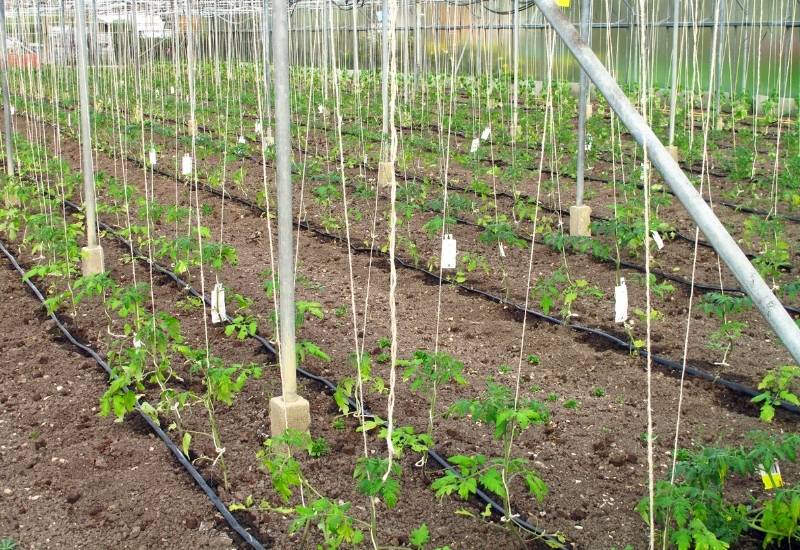
Air flow is key when it comes to preventing fungal infections like early blight, as almost every fungi will thrive in humid, damp, and/or stagnant environments.
Trellising your tomato plants is the most effective way to keep air moving between the foliage, and plants that are allowed to spread out and lie on the ground are also more likely to get early blight through soil contact.
In addition to trellising, make sure you are planting your tomato seedlings at least 18 inches apart from one another so they don’t become a tangled, jungle-y mess later in the season.
2: Plant varieties that have some resistance to Early Blight
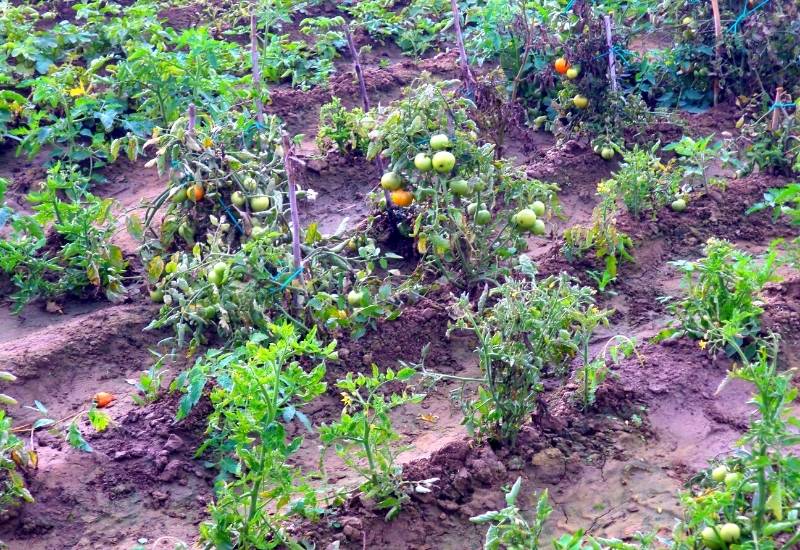
There is no tomato cultivar that is 100% immune to early blight, but there are several that have been bred for resistance against stem or leaf infections.
Purchasing one of these varieties is an excellent way to bolster your garden’s resistance, but other prevention steps still need to be taken in addition to planting these cultivars.
These are some of the most common tomato varieties that have some degree of resistance to early blight: ‘Mountain Magic’, ‘Verona’, ‘Jasper’, ‘Early Cascade’, ‘Big Rainbow’, and ‘Mountain Supreme’.
3: Do not handle wet plants
Early blight is easily transmitted through water and your tomato plants are much more likely to become infected when they are handled while wet. This is a good rule to follow in general, as many tomato diseases spread through moisture and you may unknowingly spread disease pathogens from one plant to another if pruning or trellising after a rainstorm. Wait a few hours until plants have been dried by the sun before continuing or beginning your task.
If possible, use drip irrigation or soaker hoses to water your plants, as opposed to sprinklers, to avoid foliage becoming wet and a breeding ground for disease unecessarily.
4: Only purchase certified seeds and seedlings
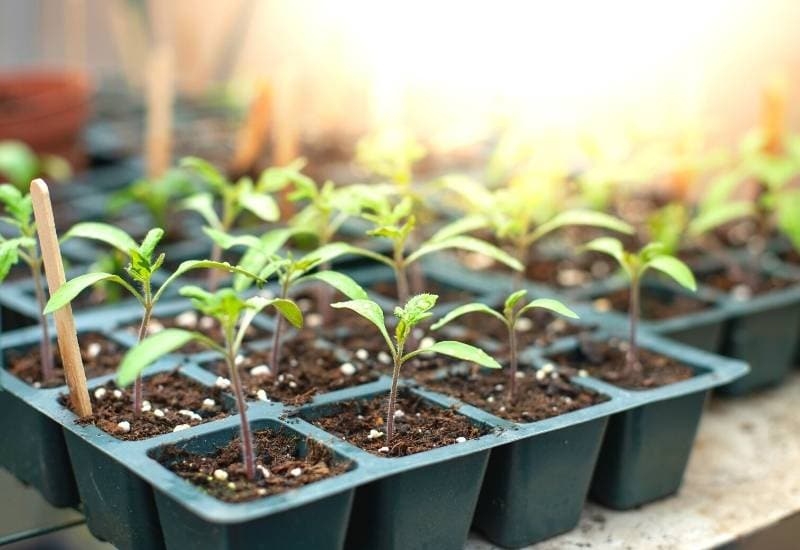
Early blight is often introduced to gardens by planting infected seeds and seedlings. Seed packets should always have a sterile certification on them, guaranteeing the buyer that they come from a secure and disease-free facility.
Seedlings should be inspected carefully, including the undersides of the leaves, for any signs of spotting, blotches, or stem lesions prior to purchase.
5: Rotate crops for a three year period
Since early blight can survive in the soil for up to a year, plants in the tomato family should be rotated on at least a three year schedule. This is a good practice for preventing many other host-specific soil-bourne diseases,
as most pathogens will not survive longer than three years without a host. All nightshades should be rotated in this manner, but especially potatoes which are particularly susceptible to early blight.
6: Apply organic fungicides before heavy rain
If heavy rain is forecasted, organic copper or sulphur based fungicides should be applied preemptively to plants to avoid infections. Try to apply as early as possible, a week or two before the rain, and then reapply after 10 days.
Since organic fungicides can be harsh on your soil and plants, limit their application to only when risk of early blight infections are high.
7: Remove and destroy all plant debris at the end of the season
For crop rotation to be effective plant debris should be removed from your field at the end of the season, to prevent the fungal pathogen from using it as a home for the winter and potentially spreading in the spring.
Clear all beds and plant a cover crop like clover to keep the soil protected and mostly free from pathogens over the winter.
Healthy Tomatoes are Less Likely be Infected
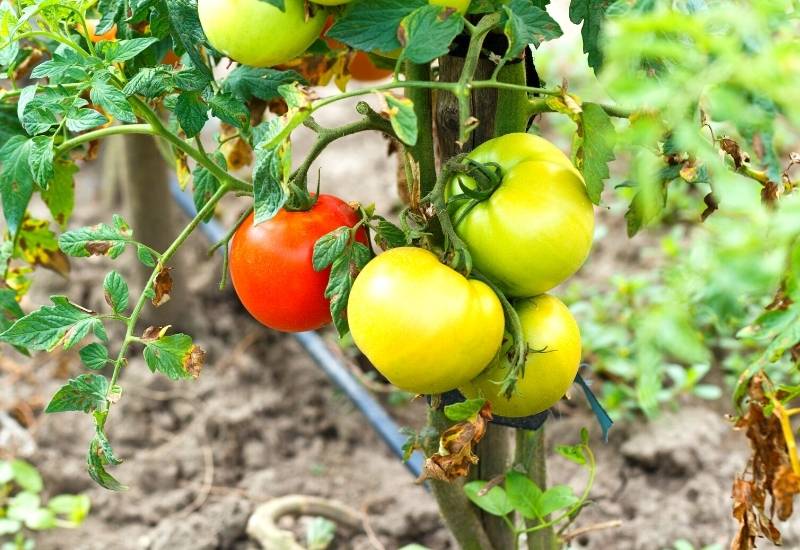
Early blight generally preys on tomatoes that are already sicky, weak, or otherwise vulnerable. Taking good care of your tomatoes from seed to harvest is the most effective way to keep early blight at bay, and avoid most other common tomato diseases as well.
Make sure to harden off seedlings, develop a good watering and fertilizing schedule, mulch your plants early on,
and keep a watchful eye on your plants throughout the growing season to keep your plants resilient and strong in the face of common fungal diseases like early blight.

Written By
Maya
Maya is a freelance content writer and avid gardener currently based in Sweden. She gained her BA in Environment and Geography in Canada, which is also where she first learnt about the detriments of the industrialized agricultural system. During the summer she began farming through the WWOOF program, and over the next six years has continued to grow and learn at a number of organic farms and gardens across the US and Canada. She is passionate about the role of regenerative agriculture in wildlife conservation and climate change mitigation, and thinks growing your own food is a key part of revolutionizing the system. In her free time she likes to read, garden, and pet nice dogs.
